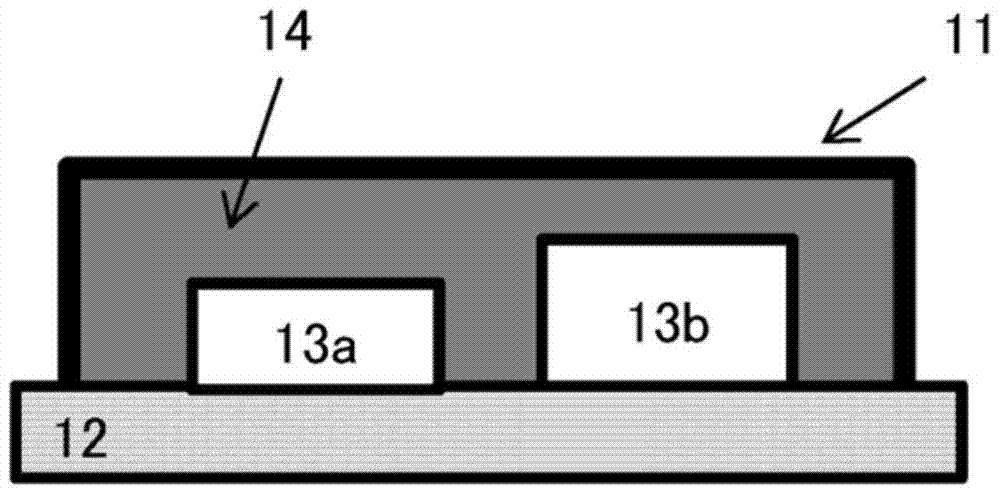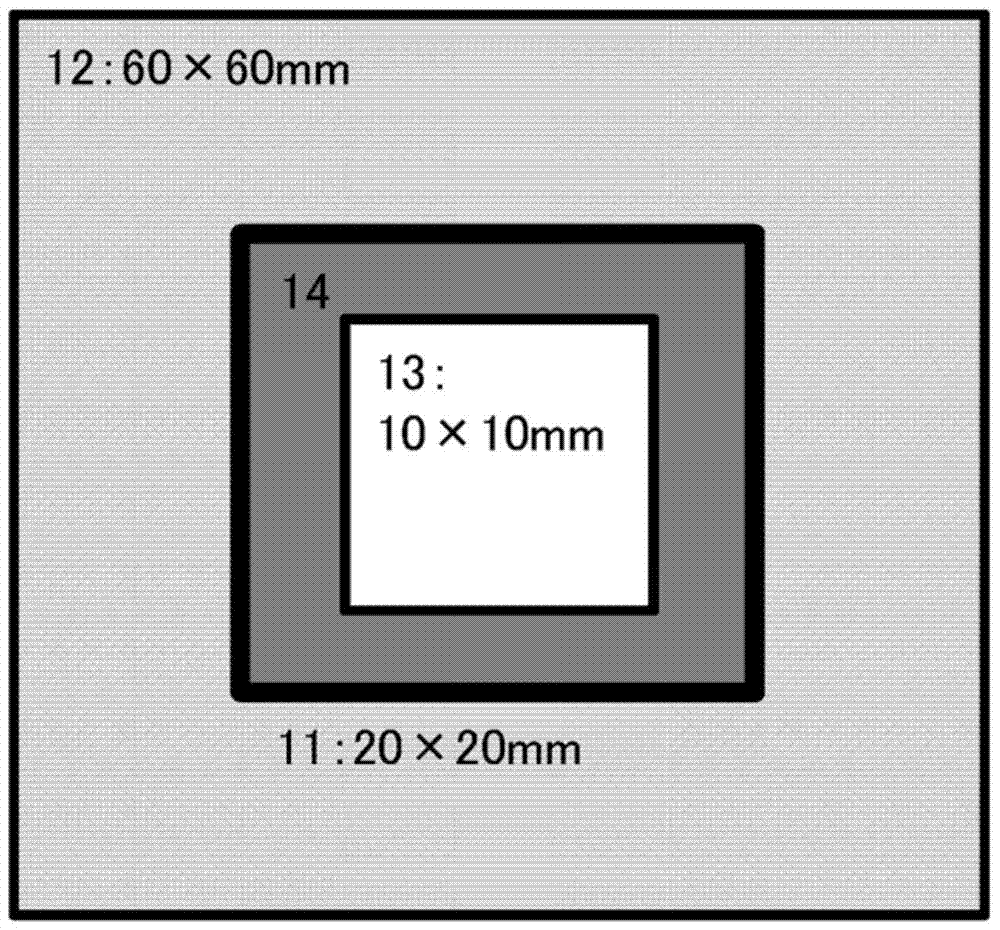heat dissipation structure
一种结构体、发热体的技术,应用在电固体器件、电路热装置、半导体器件等方向,能够解决残留变形、使用者烫伤、散至外部等问题,达到抑制传热、防止烫伤的效果
- Summary
- Abstract
- Description
- Claims
- Application Information
AI Technical Summary
Problems solved by technology
Method used
Image
Examples
Embodiment
[0115] Hereinafter, embodiments and effects of the invention will be shown through examples, but the present invention is not limited thereto.
[0116]
[0117] (Viscosity of thermally conductive resin composition)
[0118] Using a BH-type viscometer, the viscosity of the thermally conductive resin composition was measured on 23° C. and 50% RH conditions.
[0119] (Thermal conductivity of thermally conductive resin composition)
[0120] Wrap the thermally conductive resin composition in Saran Wrap (registered trademark), use a hot plate method thermal conductivity measuring device TPA-501 (manufactured by Kyoto Denshi Kogyo Co., Ltd.), clamp a sensor with a size of 4φ between two samples, and use In this method, the thermal conductivity is measured at 23°C.
[0121] (Tensile elastic modulus of cured product of thermally conductive resin composition)
[0122] The thermally conductive resin composition was cured in an atmosphere of 23° C. and 50% RH to produce a small dumbb...
Synthetic example 1
[0134] Under nitrogen atmosphere, add CuBr (1.09kg), acetonitrile (11.4kg), butyl acrylate (26.0kg) and 2,5-dibromodiethyl adipate (2.28kg) in 250L reactor, at 70 Stir at ~80°C for about 30 minutes. Pentamethyldiethylenetriamine was added thereto to start the reaction. From 30 minutes to 2 hours after the start of the reaction, butyl acrylate (104 kg) was continuously added. During the reaction, pentamethyldiethylenetriamine was appropriately added so that the internal temperature was 70°C to 90°C. The total amount of pentamethyldiethylenetriamine used so far was 220 g. Four hours after the start of the reaction, the volatile components were removed by heating and stirring at 80° C. under reduced pressure. Acetonitrile (45.7 kg), 1,7-octadiene (14.0 kg) and pentamethyldiethylenetriamine (439 g) were added thereto and stirring was continued for 8 hours. The mixture was heated and stirred at 80°C under reduced pressure to remove volatile components.
[0135] Add toluene in ...
Synthetic example 2
[0141] Polyoxypropylene glycol with a number average molecular weight of about 2,000 was used as an initiator to polymerize propylene oxide using a zinc hexacyanocobaltate glyme complex catalyst to obtain a number average molecular weight of 25,500 (using Tosoh HLC-8120GPC manufactured by the company was used as the liquid delivery system, TSK-GEL H type manufactured by Tosoh Corporation was used as the column, and THF was used as the solvent (polypropylene oxide measured in terms of polystyrene). Next, methanol was distilled off by adding 1.2 equivalents of NaOMe methanol solution to the hydroxyl groups of the hydroxyl-terminated polypropylene oxide, and then allyl chloride was added to convert the terminal hydroxyl groups into allyl groups. Unreacted allyl chloride was removed by devolatilization under reduced pressure. 300 parts by weight of n-hexane and 300 parts by weight of water were mixed and stirred with respect to 100 parts by weight of the obtained unrefined allyl-t...
PUM
 Login to View More
Login to View More Abstract
Description
Claims
Application Information
 Login to View More
Login to View More - Generate Ideas
- Intellectual Property
- Life Sciences
- Materials
- Tech Scout
- Unparalleled Data Quality
- Higher Quality Content
- 60% Fewer Hallucinations
Browse by: Latest US Patents, China's latest patents, Technical Efficacy Thesaurus, Application Domain, Technology Topic, Popular Technical Reports.
© 2025 PatSnap. All rights reserved.Legal|Privacy policy|Modern Slavery Act Transparency Statement|Sitemap|About US| Contact US: help@patsnap.com



